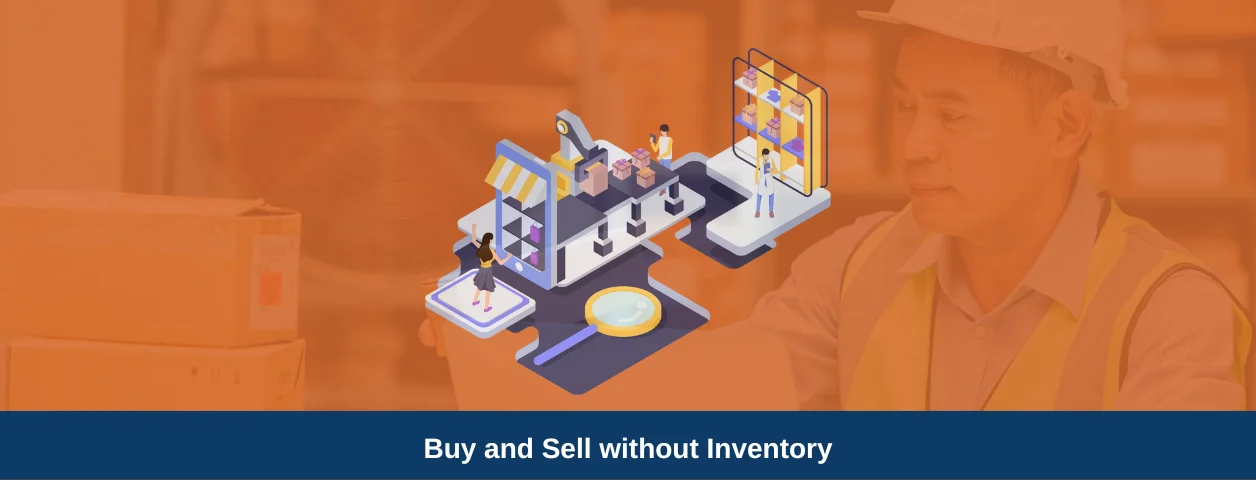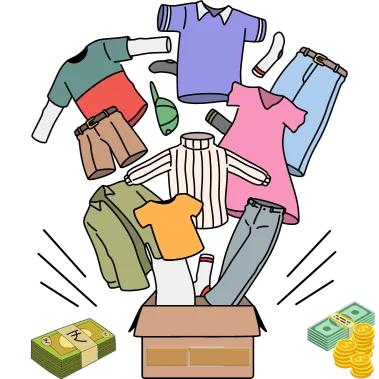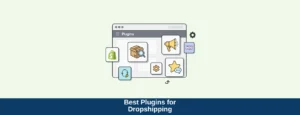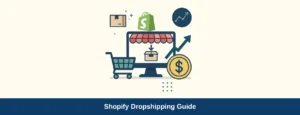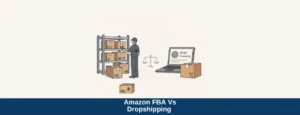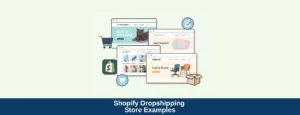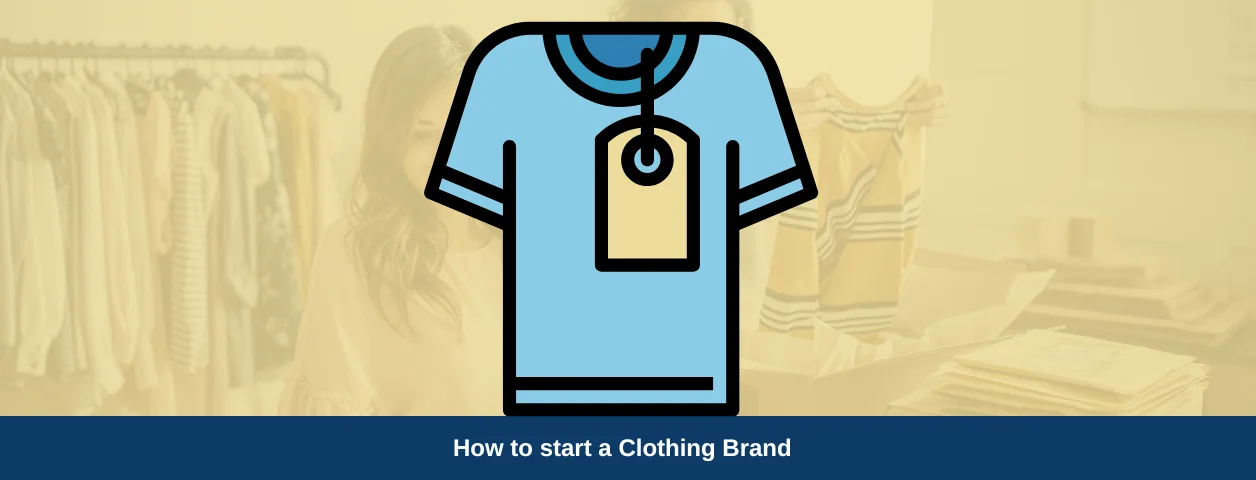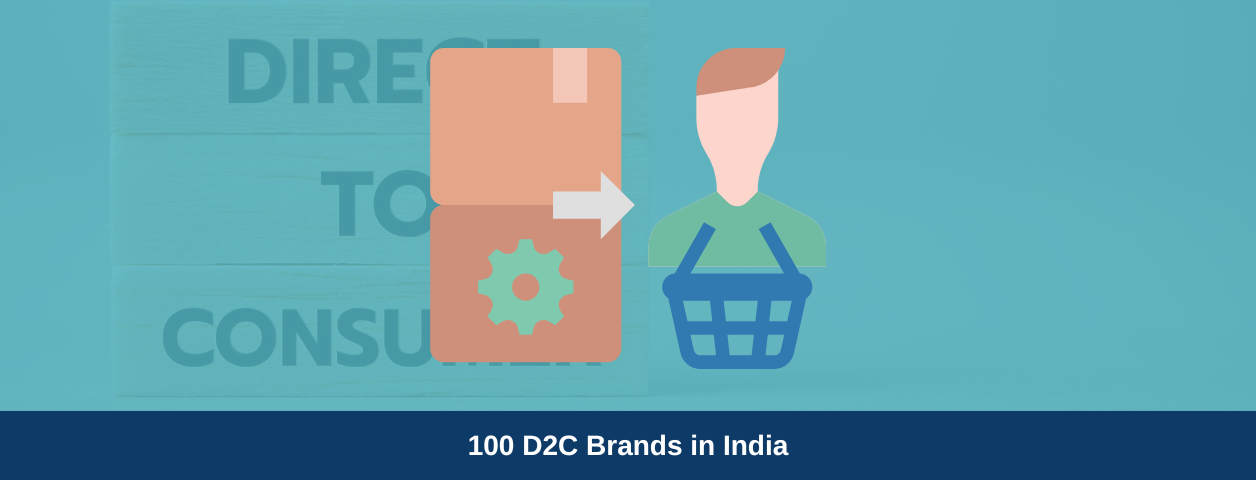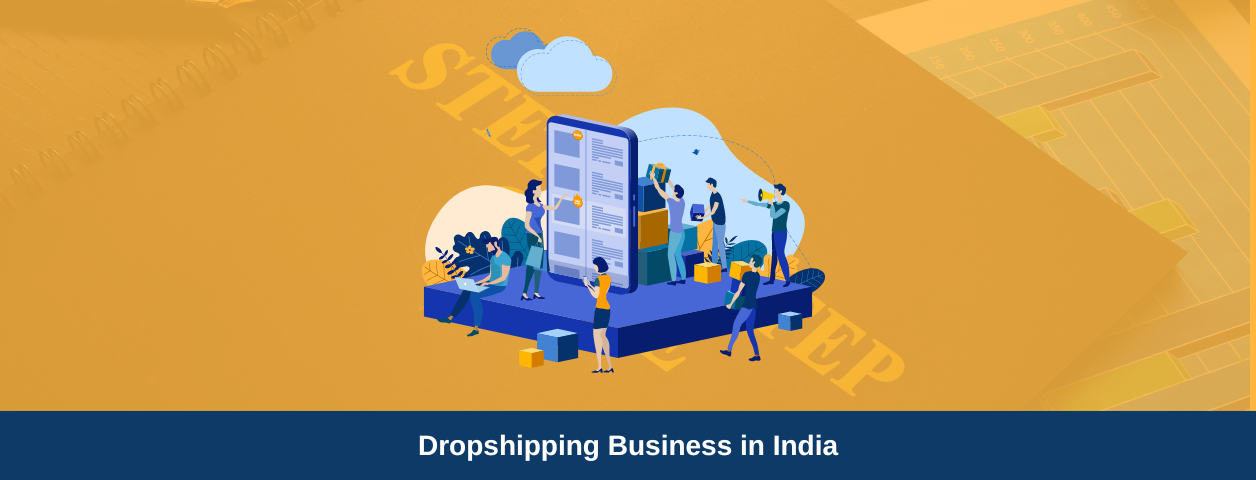Who chooses an offline shop to sell their t-shirts and coffee mugs? Not you, right? Oh, wait..do you? Well, the good news for you is you don’t have to. In the 21st century, you can sell without an inventory to create a 6-figure e-commerce business.
Matthew Woodward, a digital marketer who built websites before the inception of Google and YouTube, says,
“2.14 billion people worldwide were estimated to purchase services or goods online in 2021 – about 27% of the world’s population”.
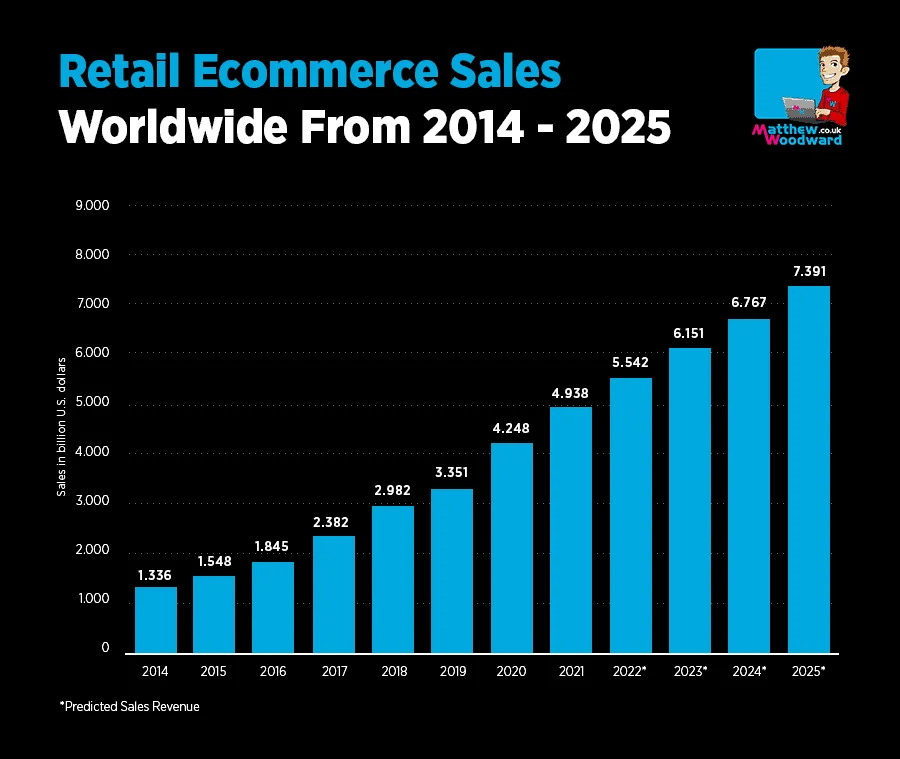
This data chart says online sales will increase further in the coming years. According to Nasdaq.com, 95% of the purchases will be online by 2040.
These data should be enough to start building your business without worrying about inventory.
If you’re reading this blog, I’m sure you plan to. Now, the question is, how to buy and sell online without inventory?
You may have already guessed the answer: by starting a print-on-demand and dropshipping business.
How to sell online without inventory?
Selling online without inventory can seem challenging, but there are two popular methods that businesses and individuals use for this purpose: print-on-demand and dropshipping.
What is print on demand, and how to sell products without inventory?
Print-on-demand is a way of selling your merchandise online to your customers without any inventory. You can put your custom design on any product you want to sell. The products can be anything. From a coffee mug with your smiling face to a curtain with your art! You can make any design possible with print-on-demand.
The best part? You won’t need to spend a penny on setting up your business. All you’ll need is an e-commerce site from where your customers will order the product and a supplier (a print-on-demand company) who will incorporate your design in white-label items and deliver them to your customer. The logistics, supply, printing, and storage will be handled by your print-on-demand (POD) company.
During the COVID-19 pandemic, the search demand for print on demand had drastically increased and will keep rising in 2022.
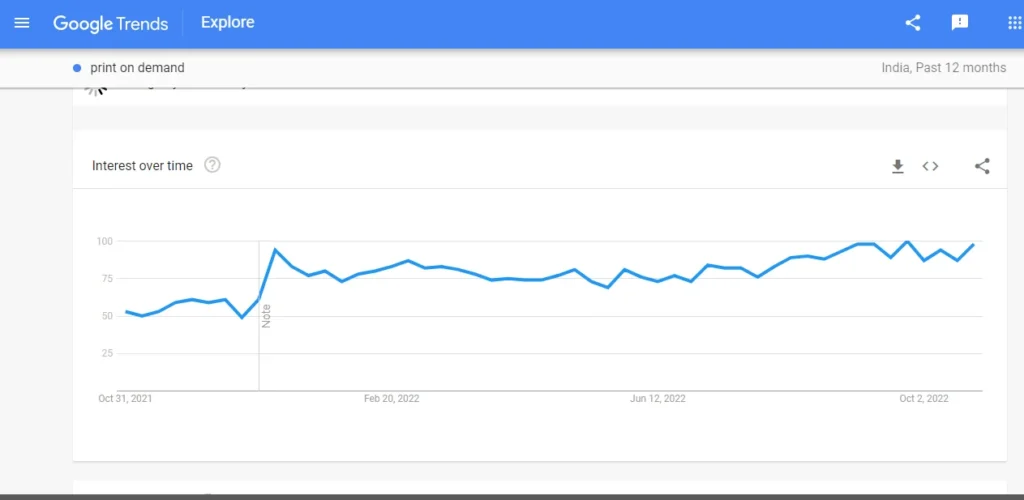
Print on Demand search interest by Google Trends.
In dropshipping, you find what you want to sell from a supplier (a dropshipping company) and list that product on your website. You don’t need to create your own designs. You can sell ready-made designs at your price here. The customer orders the product, which goes straight to your supplier. The supplier then directly delivers the product to your customer. You don’t need an inventory here, nor do you have to handle the product.
The dropshipping market had a value of $102.2 billion in 2018. Experts suggest its annual growth rate will increase by 28.8% from 2019 to 2025.
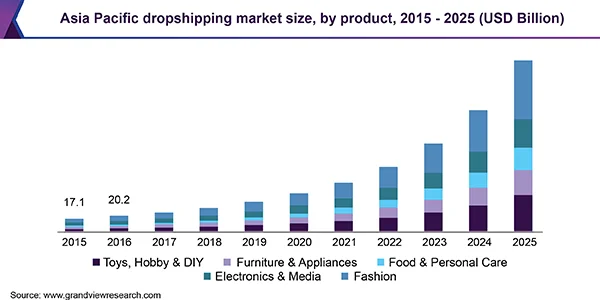
Note: You only have to pay a wholesale amount to your supplier when they package and deliver products on your behalf. You can also spend money on marketing, but it’s not mandatory.
Before we get into the guide, let’s clear up some of your confusion.
Is print on demand and dropshipping better than conventional retailing?
Dropshipping or POD are the best models to sell products online without inventory. The pros of these two models over conventional retailing are
- You can start an e-commerce store without inventory.
- You don’t have to worry about shipping.
- If your products are as large and heavy as a refrigerator, it may be inconvenient to store them. Dropshipping models work the best in this regard.
- You won’t have to pay extra for inventory since there’s none.
Pros of Conventional Retailing:
- You control the supply process from start to finish.
- Fast Delivery as you have the products in your inventory.
With Traditional Retailing, the main risk is storing products in the inventory. It requires additional cost. Perishable products may expire. The products could also be damaged while it’s in storage. Unsold products are a complete waste. Weighing the pros, POD, and dropshipping is better than conventional retailing.
Print on demand vs dropshipping: Are they the same?
Before you start your business, think of this question. As you can see by the definitions, POD and dropshipping are frighteningly similar. Yet, they have their differences. Let’s see what makes them similar or different and which suits you.
Print on demand vs dropshipping: Similarities
Sell without inventory
Both of them don’t require an inventory. The responsibility of stocking goes to your supplier. This feature saves you a ton of money you would have to spend storing your products and throwing them away if they didn’t sell.
Zero risk
Since there’s no inventory question, the risk is minimal in both. POD and dropshipping follow the supply-on-demand system, so there’s no fear of unsold items. There’s also no reduction in profits because of that.
No shipping, no worries!
The other thing you won’t have to worry about is shipping. From packaging the item to delivering it to your customer’s doorstep, the supplier will do it all for you.
Earn money without putting any effort
You don’t have to put in any effort to make money via POD and dropshipping. Both types give you passive income. The only work you must do is set up your online business and contact a supplier. That’s all. The rest of the process will be automatic. It doesn’t require much supervision from you.
Learn new skills
Setting up any business requires marketing. You have to learn if you don’t know how to market products. Social media, SEO, email, or YouTube marketing can be done. Let your audience know what you sell. You also need to learn about customer service (gotta satisfy them!), market research, and how to manage your finances.
Print on demand vs dropshipping: Differences
Processing & delivery time
Printing requires time. For POD, each product is custom-made when the customer orders them. They aren’t kept in bulk. For this reason, the delivery may take more time and cost more money.
For drop shipping, items are already mass-produced and kept in bulk by the supplier. When an order comes in, they deliver it faster.
Product variety
Both POD and dropshipping offer a variety of products. But POD is limited to products that you can put your custom design/print. The popular niches in POD are coffee mugs, cups, t-shirts, and accessories.
In dropshipping, you can sell anything that’s allowed for delivery. There’s no question of printing designs on any product in dropshipping.
Personalization
This point is an extension of the 2nd point. Since you can put your design on the products, you can personalize and customize them on POD. It becomes a lot more than just personalized packaging. Your customers will remember you for the distinct features of your product.
Dropshipping products are created beforehand by suppliers. You just sell them. You can’t personalize them. There’s no distinction to it except the packaging.
Profit
Profit is more on dropshipping. These items are produced in bulk, so the production cost is less, resulting in more profit in this business. You don’t have to personalize or brand the item unless you want to. So the entire process is faster. Sales happen more quickly.
For POD, sales happen slower as designs take more time and effort. But it shouldn’t stop you from building your POD business because customers love personalized items. And don’t you want to create your brand image?
Growth
They both have chances for growth. Since in drop shipping, you only need to list products on your site and sell them, the opportunity for growth is much higher. You can add as many items as you want. You can research other markets/niches to grow further.
The number of additions can only increase in POD if you add more designs. Plus, the product varieties are fewer than dropshipping, so you can’t extend to other products.
Competition
There’s competition in dropshipping. Since there’s no originality, you compete with thousands of brands selling the same products. To stand out, there must be an element of distinctiveness in your products, or your customer service must be top-class. Your USP won’t necessarily be in your products.
There’s low competition in POD. Yes, there’s a chance of designs getting copied. But the products still vary from one another. The best feature of POD is its uniqueness. You can provide niche-based products for a specific target audience, like gamers or people who work from home. Your product originality differentiates you from the crowd. You won’t be required to do anything extra.
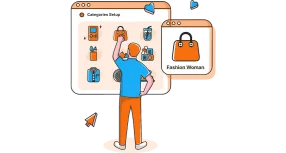
Print on demand vs dropshipping: Which one will you choose?
Here’s the answer to the million-dollar question: Choose whichever fits your business objectives and expertise. Both have their pros and cons. POD is the best option to establish your brand name and utilize your artistic/design skills. If you want fast money and rapidly expand your business, go for dropshipping.
I have good news for you here. You can start a POD and a dropshipping business simultaneously. Or use both strategies in your e-commerce website. Don’t know how? Just create a free business account on Qikink. If you have a Shopify/woo-commerce site, connect it with Qikink. (If you don’t have one, learn how to start your Shopify/woo-commerce site here.)
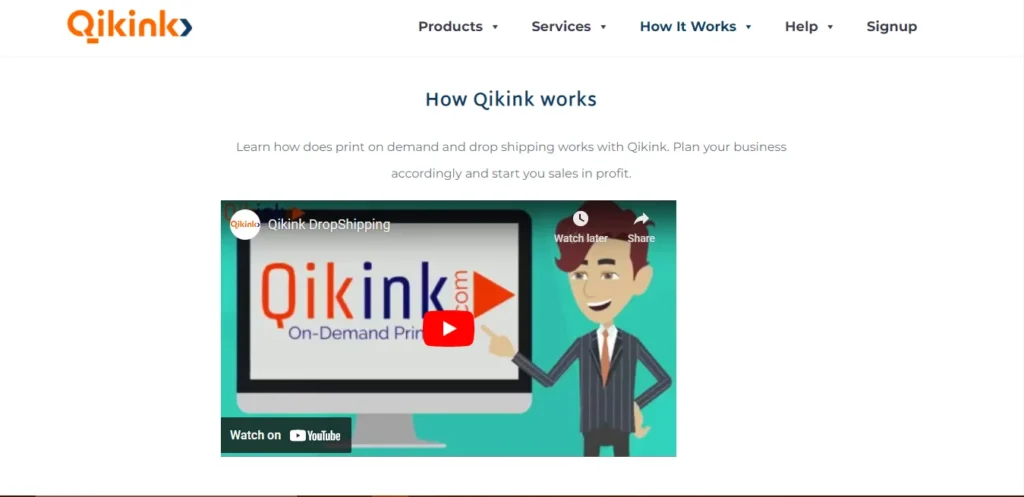
How to start a print on demand and a dropshipping business?
Now that I have clarified your confusion let us see how to start the business. Both print-on-demand and dropshipping follow the same process, so you don’t have to worry about following different protocols for the two.
Step 1: Choose a niche and your target audience
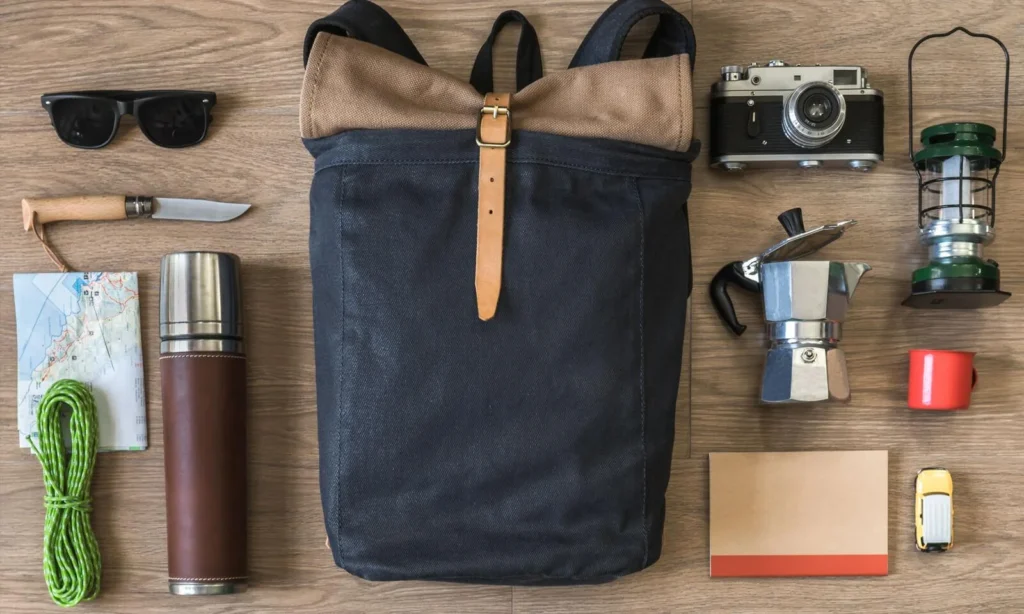
It sounds tempting to try everything. But choosing a niche and your target audience guarantees sales by 3x. This case study shows that having a niche can make you as much as $6667 in 8 weeks! A niche guarantees:
- Low competition
- Brand Loyalty
- Target marketing
- 3x Profit
- Expertise with time
How to choose a niche? The first criterion is to pick something you like or are interested in. The following criterion is to check if it’s profitable. Your niche should culminate your interest and the potential profit you can make. The popular niches for POD and dropshipping are jewelry, tech, fitness, clothes, and cutlery.
- Just pick anything of your interest and do a Google Search. Use Google Trends to see if your niche is still in demand.
- You can use popular keyword research tools like Ubersuggest and Semrush (the first few tries are free) to see the search volume of your target keyword and its competitiveness. These sites suggest related searches so you may understand what your audience wants. Another great free tool to know the search intent of your target audience is Answer the Public.
- Check out the well-established online stores in your niche. You can see which item is trending and get an idea of what products you can sell/not sell in your niche. Don’t focus on the trending sub-niche only. Remember to keep regular products along with trendy ones. For example, full-sleeve t-shirts may be a trend within the t-shirt niche. But don’t sell full-sleeve t-shirts only. Try varieties and keep the trends.
Step 2: Analyze your competitor
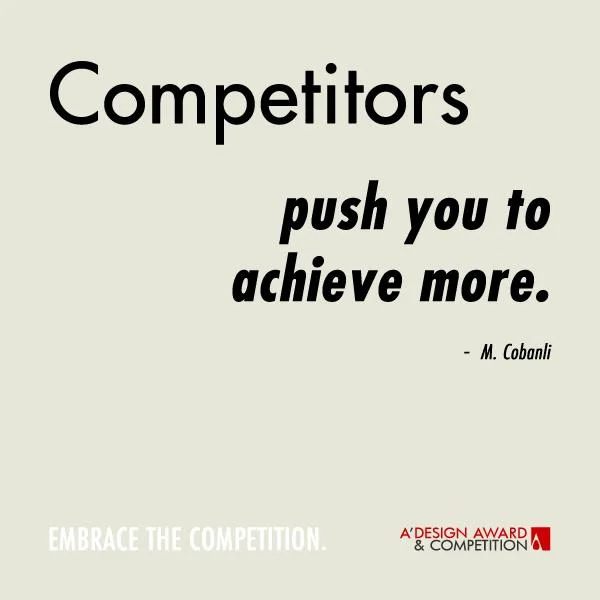
What better way to know what to sell than analyzing your competitors? Check out your competitors once you have decided on your niche and target audience. Look for answers to these eight questions:
- What are they selling?
- How are they selling?
- What are they not selling?
- Can you sell what they are not?
- How do they market themselves?
- How much engagement/sales do they get?
- What’s their USP (Unique Selling Proposition)?
- What’s something that you can copy from them?
One of the best ways to stand out from your competitors is to do what they are NOT doing. Sell something they aren’t selling. Give a bonus, discount, or a special offer they are not giving. It can also serve as your USP.
Find your competitors by following these mini steps:
- Do a Google search on your niche. Keep a note of the top 10 results. If you’re selling products for everyone around the globe or to a different location than your country, use tools like Semrush to get data from other parts of the world. You may not always get data on prominent niche competitors with a general search. Use SimilarWeb for a detailed analysis of your competitors, from their social media to the traffic on their websites.
Use social media to analyze your competitors. Check out how they market their products there. Use Buzzsumo to see which content/blog gets the most social shares. You may get content ideas from it. Sign up for your competitors’ newsletters to stay up-to-date with their marketing style and content.
Step 3: Contact a supplier
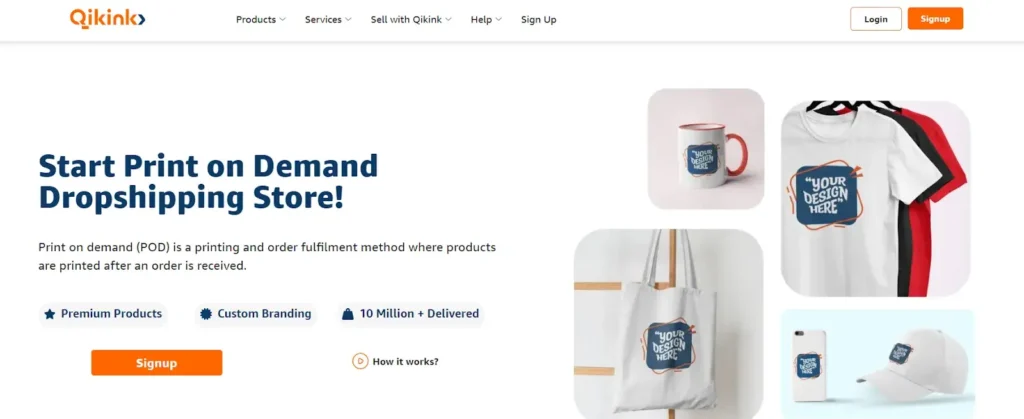
You need a supplier to print (if you want a POD business), pack, and supply the item to your customer. It’s simple. Sign up at Qikink and create your online store by choosing from 100 products. Supply your products at the cheapest rate. You can use Qikink with whichever store you have, whether it’s Shopify, any other woo-commerce site, or even an open API integration.
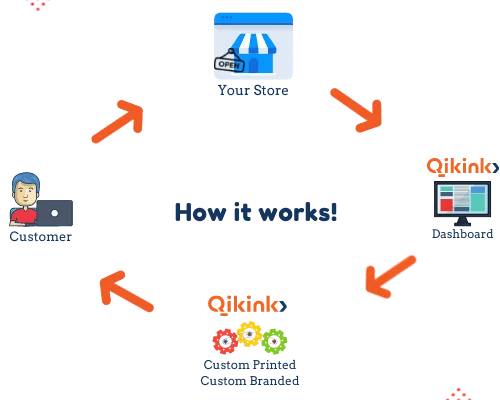
Step 4: Build your POD & dropshipping store
- Now that we are done with the basics. Let’s look at the technical aspect of starting a print-on-demand and dropshipping business.
- Get a Domain Name: If you’re building your brand, your domain name matters. Preferably include your niche in the name and keep it .com. Don’t be too specific with the niche and give a broad term like T-shirt, Jewellery, etc. You can use Oberlo’s free business name generator to get some help.
- Sign up at a Woocommerce Platform: You can sign up at any woo-commerce platform to set up your business. Use Shopify as their site has every tool to run your business smoothly. Click here to decide where to start.
- Integrate your Shopify store with Supplier: See the facilities they are providing.
Remember to ask these questions before choosing your supplier:
- How fast is their delivery?
- How is their packaging?
- How much do they charge?
Pricing:
Set your prices so that you have a profit of at least 40%, if not greater. For example, if your supplier charges you Rs 5000, the cost of your product should be at least Rs 10000. Use a profit calculator to check out how you can make a profit.
Step 5: Promote your print on demand or dropshipping business
If you are low on budget and have a professional social media account, start promoting your products on social media. If you already have a website, market there too. Let your audience know you have created a POD or a dropshipping business. If you don’t have any social media influence or website, try these marketing techniques:
- Facebook Ads
- Influencer Marketing
- Retargeting Ads
- Email Marketing
Use the HARO tool to get free media coverage. On this site, reporters reach out for product recommendations or information for their articles. Promote your website on their articles.
Step 6: Analyze
You have done everything at this stage, from setting up your business to marketing. Now, watch the fruits of your labor. Some of your marketing tactics will work, while some won’t. See what works and focus on those tactics. Use Google Search Console and Analytics to measure the traffic you get on your website each month.
The end goal should be to increase traffic and generate more sales. Optimize your revenue so that it grows every month.
How to sell on Shopify without inventory?
Shopify is a popular e-commerce platform that allows businesses to create an online store and sell products. While having inventory is necessary for many businesses, there are some ways that you can sell on Shopify without having to manage inventory.
If you want to sell on Shopify but don’t want to manage inventory, there are two main options: dropshipping or print-on-demand. With dropshipping, you partner with a supplier who manages inventory and fulfills orders directly to customers. With print-on-demand, you create custom designs for products, and a service prints and ships them to customers when they order.
To sell without inventory, it’s essential to choose reliable suppliers or print-on-demand services and focus on branding and marketing to attract customers. Using these methods, you can focus on sales and leave inventory management to a third party.
Conclusion: Guide on how to start a dropshipping and a print on demand business
There are a lot of factors you have to keep in mind to start an e-commerce business without inventory. Refer to this comprehensive guide to build your empire- your online store. But what’s the best step you can take to develop your business? The best step is to start NOW.
Frequently Asked Questions
Why Shall I choose Qikink as my Supplier?
There’s no hard and fast rule. But with Qikink, you get:
- A variety of products to choose from
- Unique and Customized Branding
- Instant Support for Queries
- Lowest Pricing
- Fast Delivery
Click here to learn more benefits
Is paid marketing mandatory for my POD or Dropshipping business?
Marketing is mandatory for any POD or dropshipping business. Experts recommend paid marketing if you don’t have any online presence to generate fast revenue and increase traffic to your website. Organic Marketing takes time.
Can I create my POD or Dropshipping store on WordPress?
Yes, you can. Check out this guide to learn how to create it.
How much money can I make from Print on Demand and Dropshipping in India?
There’s no limit to how much you earn. You can earn from INR 5,000 to INR 5,00,000 in both businesses monthly. It all depends on how you set up and market your products.
How do you plan to source products or services for your online business without maintaining physical inventory?
One can opt for dropshipping, wholesale, or print-on-demand services to source products or services for an online business without maintaining physical inventory.
Are you considering dropshipping as a business model, and if so, have you identified potential suppliers?
Dropshipping can be considered a business model as it allows the retailer to fulfill orders through a third-party supplier. Potential dropshipping suppliers can be found on AliExpress, Oberlo, and Spocket platforms.
What strategies will you use to market your online store and attract customers?
One can use social media platforms, email marketing, SEO, and paid advertising to market an online store and attract customers. Creating quality content and engaging with customers can also help build a loyal customer base.
How will you handle order fulfillment and shipping logistics for the products you sell?
One can use a fulfillment center or outsource the process to a third-party logistics provider (3PL) to handle order fulfillment and shipping logistics.
Have you determined your pricing strategy and profit margins for the products or services you plan to offer?
Pricing strategy and profit margins should be determined based on the cost of the product, shipping, and other associated expenses. It is important to conduct market research and monitor competitors’ pricing to stay competitive.

